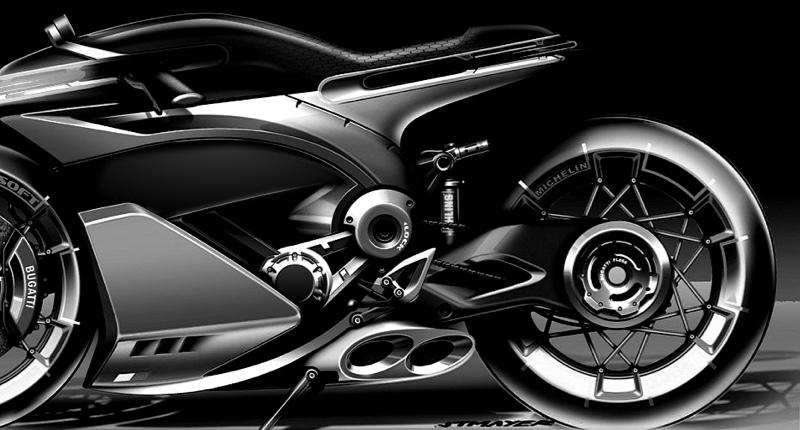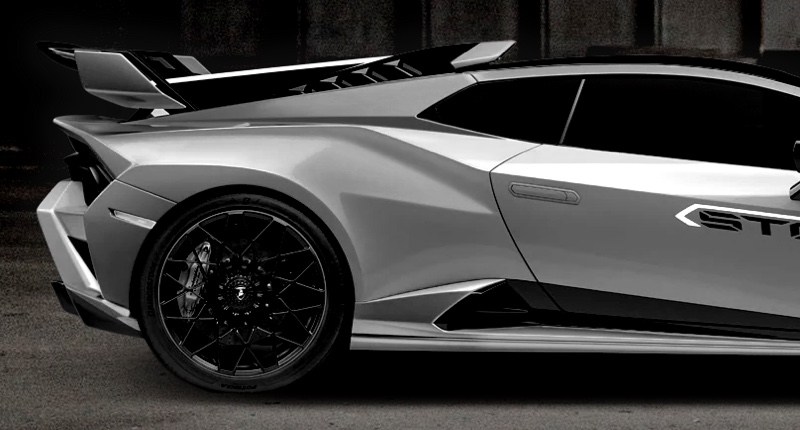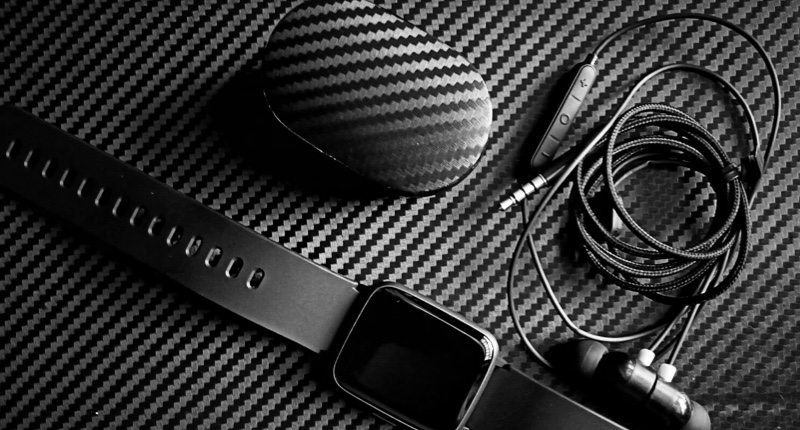How are custom carbon fiber car parts manufactured and finished? | Insights by Supreem Carbon
- The Art and Science of Manufacturing Custom Carbon Fiber Car Parts
- What is Carbon Fiber and Why is it Preferred for Automotive Applications?
- The Core Manufacturing Methods: Pre-Preg Autoclave vs. Vacuum Infusion
- Crafting Perfection: The Mold Making Process
- From Raw Composite to Gleaming Finish: The Finishing Stages
- Ensuring Performance and Longevity: Quality Control and UV Protection
- Dry Carbon vs. Wet Carbon: Understanding the Terminology
- Supreem Carbon: Engineered for Excellence
- Data Citation Sources:
The Art and Science of Manufacturing Custom Carbon Fiber Car Parts
What is Carbon Fiber and Why is it Preferred for Automotive Applications?
Carbon fiber is a remarkably strong and lightweight material composed of incredibly thin strands of carbon atoms, typically 5-10 micrometers in diameter. These strands are twisted together to form yarns, which are then woven into a fabric. When combined with a polymer resin (usually epoxy), it forms a carbon fiber reinforced polymer (CFRP) composite. For automotive applications, carbon fiber offers several compelling advantages:
- Exceptional Strength-to-Weight Ratio: Carbon fiber is significantly lighter than steel (up to 70% lighter) and aluminum (20-30% lighter) while offering comparable or superior strength. This translates to improved fuel efficiency, faster acceleration, and better handling due to reduced unsprung mass.
- High Stiffness: Its high modulus of elasticity provides excellent rigidity, which is crucial for structural components, enhancing chassis stiffness and crash safety.
- Corrosion Resistance: Unlike metals, carbon fiber does not rust or corrode, contributing to the longevity of parts.
- Aesthetic Appeal: The distinctive woven pattern often desired for performance and luxury vehicles.
The Core Manufacturing Methods: Pre-Preg Autoclave vs. Vacuum Infusion
The quality and performance of a carbon fiber part are heavily dependent on its manufacturing method. Two primary methods dominate the custom automotive parts industry:
Pre-Preg Autoclave (Often referred to as “Dry Carbon”)
This is the gold standard for high-performance and aerospace-grade carbon fiber parts. 'Pre-preg' refers to carbon fiber fabric that has been pre-impregnated with a precisely measured amount of epoxy resin by the supplier, then frozen to prevent premature curing. The process involves:
- Lay-up: Multiple layers of pre-preg carbon fiber are meticulously hand-laid into a precision mold, often in a clean room environment to prevent contamination.
- Vacuum Bagging: The mold and lay-up are sealed within a vacuum bag, and a powerful vacuum is applied to remove all trapped air and compact the layers.
- Autoclave Curing: The entire assembly is placed into an autoclave – a specialized oven that applies both high heat and high pressure simultaneously. Typical curing temperatures range from 120°C to 180°C (250°F to 350°F), with pressures up to 6-7 bar (85-100 PSI). This precise control ensures optimal resin flow, minimal void content (typically less than 1%), and maximizes the material's mechanical properties, resulting in a lightweight, incredibly strong, and near-perfect surface finish.
Vacuum Infusion (VARTM - Vacuum Assisted Resin Transfer Molding)
This method is an excellent alternative to pre-preg for parts requiring good quality but perhaps not the absolute pinnacle of performance or where lower tooling costs are preferred. Dry carbon fiber fabric is laid into a mold, and then a vacuum is pulled. Resin is then infused into the mold, drawn by the vacuum, impregnating the fibers. While producing significantly better results than wet lay-up, it typically has higher void content (often 2-5%) and slightly less consistent resin-to-fiber ratios compared to pre-preg autoclave methods.
Crafting Perfection: The Mold Making Process
Custom carbon fiber parts begin with custom molds, where precision is paramount for perfect fitment and aesthetics. The mold-making process typically involves:
- CAD Design: The part is digitally designed using advanced CAD software (e.g., SolidWorks, CATIA).
- CNC Machining of a Master Plug: A 'master plug' (a positive replica of the desired part) is precisely machined from materials like high-density foam, wood, or tooling board using a CNC machine. Tolerances for these plugs are often as tight as ±0.1mm.
- Mold Creation: A durable mold (tooling) is then created from this master plug, often using high-quality composite materials or aluminum, designed to withstand the heat and pressure of the curing process. For pre-preg autoclave, robust, high-temperature molds are essential.
From Raw Composite to Gleaming Finish: The Finishing Stages
Once cured, carbon fiber parts undergo a meticulous finishing process to achieve their characteristic gleam and ensure durability:
- Demolding & Initial Trim: The part is carefully removed from the mold and excess material (flash) is trimmed.
- Surface Preparation: The part is meticulously sanded, starting with coarser grits (e.g., 400-600 grit) to smooth any minor imperfections, and progressing to finer grits (e.g., 1500-3000 grit wet sanding) to achieve a perfectly smooth, ready-for-clear-coat surface. This stage is critical for the final appearance.
- Clear Coat Application: A high-quality automotive-grade 2K (two-component) clear coat, often urethane-based for its flexibility and UV resistance, is professionally applied in multiple layers. This clear coat not only provides a deep, glossy finish but also serves as the primary protection against environmental elements.
- Wet Sanding & Polishing: For an even more flawless, mirror-like finish, the clear coat may be wet-sanded again with ultra-fine grits (e.g., 3000 grit and higher) and then buffed and polished using professional compounds to remove any haze or swirl marks, bringing out the depth and clarity of the carbon weave.
Ensuring Performance and Longevity: Quality Control and UV Protection
High-quality carbon fiber parts are not just about aesthetics; they are built for performance and durability. Rigorous quality control measures are essential:
- Visual Inspection: Checking for weave consistency, absence of voids, pinholes, or delaminations.
- Dimensional Accuracy: Using tools like CMM (Coordinate Measuring Machines) to ensure the part meets precise specifications for fitment.
- Material Testing: For critical components, samples may undergo destructive testing (e.g., tensile strength, flexural strength, void content analysis) to verify mechanical properties.
- UV Protection: Carbon fiber resin is susceptible to degradation and yellowing from ultraviolet (UV) radiation. A high-quality clear coat infused with advanced UV inhibitors is paramount. Additionally, applying ceramic coatings can offer an extra layer of sacrificial protection and enhanced gloss, significantly extending the life and appearance of the part. Without adequate UV protection, parts can yellow and become brittle over time, losing their aesthetic appeal and structural integrity.
Dry Carbon vs. Wet Carbon: Understanding the Terminology
The terms 'dry carbon' and 'wet carbon' are frequently used in the automotive aftermarket, often leading to confusion. Understanding their fundamental differences is crucial for assessing part quality:
- Dry Carbon: Generally refers to parts manufactured using the pre-preg autoclave process. The term 'dry' implies that the carbon fiber fabric is pre-impregnated with a precise amount of resin and then cured under heat and pressure, resulting in very little excess resin and virtually no voids. This method yields the lightest, strongest, and highest quality parts with a superior finish.
- Wet Carbon: Typically refers to parts made using a 'wet lay-up' process, where dry carbon fiber fabric is laid into a mold, and then liquid resin is applied by hand (brushed or rolled on). This method is less precise, often results in excess resin, higher void content (up to 10% or more), and heavier, weaker parts compared to dry carbon. While more cost-effective, parts often require more extensive finishing to hide imperfections. Sometimes vacuum infusion is also broadly categorized under 'wet carbon' by enthusiasts, though it's a superior method to traditional wet lay-up.
Supreem Carbon: Engineered for Excellence
At Supreem Carbon, we specialize in delivering unparalleled quality and performance. Our advantages include:
- Advanced Pre-Preg Autoclave Manufacturing: We exclusively utilize the pre-preg autoclave method, ensuring minimal void content, optimal strength-to-weight ratios, and aerospace-grade mechanical properties for every part.
- Precision CNC Machining & Tooling: Our molds are crafted with extreme accuracy using advanced CAD and CNC technology, guaranteeing perfect fitment and seamless integration with your vehicle.
- Masterful Finishing: Each part undergoes a multi-stage finishing process, including meticulous wet-sanding and application of High Quality automotive-grade 2K clear coats with robust UV inhibitors, followed by professional polishing for a deep, lustrous, and durable finish.
- Rigorous Quality Control: Every component is subjected to stringent visual and dimensional inspections to meet our exacting standards and exceed customer expectations.
- Superior Durability & Aesthetics: Our commitment to high-quality materials and processes ensures parts that not only look spectacular but also withstand the elements and perform flawlessly for years to come.
Data Citation Sources:
- CompositesWorld Magazine - Manufacturing and Materials Insights
- ACMA (American Composites Manufacturers Association) - Industry Best Practices
- Toray Composite Materials America, Inc. - Product Technical Data Sheets (Pre-preg curing cycles)
- Industry standards for automotive clear coats (e.g., BASF, AkzoNobel technical data)
- Automotive Engineering International - Weight Reduction and Performance Studies

Carbon Fibers: What Are They and Why Are They Everywhere? (Production, Properties, and Uses Explained)

Лучший производитель углеродного волокна в Китае

2020+ Toyota Supra A90 Carbon Fiber Engine Cover released!

Upgrade Your Ride: Custom Motorcycle Carbon Fiber Parts by Supreem Carbon

New arrivals- BMW CSL style carbon fiber front grille released by Supreem carbon!!

Lamborghini Urus engine compartment carbon fiber kit released by Supreem Carbon.
For After-sales Service
Do you offer the fitting advice?
Of course! If you have any questions, please contact us on info@supreemcarbon.com.
Do you offer a warranty?
Six month standard warranty on all products. Damage due to installation error or natural elements will not be covered.
For Carbon Fiber Material
What are the advantages of carbon fiber?
High Strength-to-Weight Ratio
It is stronger than many traditional materials, such as steel and aluminum.This high strength-to-weight ratio allows for the creation of lightweight components that maintain structural integrity and durability.
Lightweight
One of the most significant advantages of carbon fiber is its low density, contributing to lightweight structures. This property is particularly crucial in industries where weight reduction is a priority, such as aerospace, automotive, and sports equipment.
Resistant to corrosion and chemicals
Carbon fiber is inherently resistant to corrosion, making it an ideal material for applications exposed to harsh environments or corrosive substances. This property contributes to the longevity of components and reduces maintenance requirements. Carbon fiber has good chemical resistance, making it suitable for use in environments where exposure to chemicals or harsh solvents is a concern. This resistance enhances the material's durability in various industrial settings.
Tolerant of high temperature
Carbon fiber exhibits excellent thermal stability and resistance to high temperatures. This makes it suitable for applications where components are exposed to elevated temperatures, such as in the aerospace and automotive industries.
Low thermal expansion
Carbon fiber has a low coefficient of thermal expansion, meaning it expands or contracts minimally with changes in temperature. This property contributes to dimensional stability, making carbon fiber components reliable in varying temperature conditions.
Aesthetic Appeal
Carbon fiber has a modern and high-tech appearance, contributing to its aesthetic appeal. This property is leveraged in consumer goods, automotive components, and sporting equipment where visual appeal is important.
For Order Delivery
What is the shipping time for the different ways?
Express delivery 5-7 days.
20-25 days by sea.
15 days by air.
How to choose the mode of transportation?
We use official shipment like Fedex,UPS,DHL and so on. Also customer can arrange delivery by themselves.

Aprilia Tuono V4 Carbon Fiber Front Fairing with Windshield

Yamaha R1 Carbon Fiber Side Fairings
Introducing the Supreem Carbon Fiber Long Side Panels for Yamaha R1. Crafted with precision and expertise, this front side fairing is designed to elevate the performance and aesthetics of your R1. Made from high-quality carbon fiber, this fairing is not only lightweight but also incredibly durable, providing optimal protection for your motorcycle.

Honda CBR1000RR-R Carbon Fiber Side Fairing

BMW F85/ F86 Carbon Fiber Interior Engine Cover Replacement
Crafted with precision, this BMW carbon fiber accessory combines perfect fitment with superior UV protection and clearcoat finishing. Ideal for OEM-quality upgrades and custom builds.
Let’s Bring Your Carbon Fiber Ideas to Life
Have a question or inquiry about our carbon fiber composite products? Leave us a message here, and our team will get back to you promptly.
Whether you're interested in custom orders, technical specifications, or partnership opportunities, we're here to assist you.
Please fill out the fields above with your name, email address, and message.
© 2024 Supreem Carbon All Rights Reserved.





Facebook
Pinterest
LinkedIn
Instagram